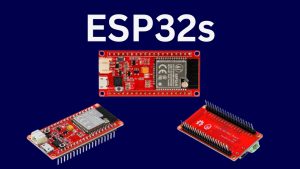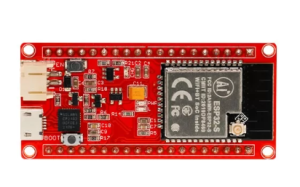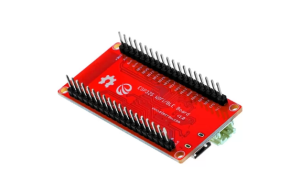Introduction
In the Internet of Things (IoT) realm, the ESP32s has emerged as a powerhouse, offering a perfect blend of versatility, efficiency, and advanced features. This guide delves deep into ESP32s, exploring its capabilities, potential applications, and why it stands out in the rapidly evolving landscape of microcontrollers.
Designed for novices and seasoned professionals, this article sheds light on how the ESP32s are shaping the future of IoT solutions and why they are an indispensable tool in modern electronics.
Understanding the ESP32s: A Technological Marvel
The Essence of ESP32s
The ESP32s is a series of low-cost, low-power system-on-chip microcontrollers, setting itself apart with integrated Wi-Fi and dual-mode Bluetooth capabilities. This combination of features positions the ESP32s as a leader in IoT advancements, offering a powerful solution for various applications while maintaining efficiency and versatility. Its dual-core processor ensures high performance and low power consumption, making it ideal for multiple IoT applications.
Architectural Excellence and Features
The architecture of the ESP32s is a marvel in itself, featuring a robust processor, ample memory, and a diverse range of peripherals like GPIO, SPI, UART, ADC, and DAC.
These features provide the ESP32s with a wide range of functionalities and make it adaptable to different IoT scenarios. The processor’s details and the efficient management of memory and storage are critical for the seamless operation of IoT devices, especially in power-sensitive applications.
Revolutionary Applications of the ESP32s
Transforming Home Automation
The ESP32s is making significant strides in home automation, enabling smarter and more efficient management of home systems. Its ability to connect various sensors and devices wirelessly revolutionizes how we interact with our living spaces.
Advancing Industrial IoT
In the industrial sector, the ESP32s plays a crucial role in enhancing productivity and safety. Its robustness and reliability make it a preferred choice for industrial IoT solutions, where precision and durability are paramount.
Pioneering Wearable Technology
The versatility of the ESP32s extends to the burgeoning field of wearable technology. From fitness trackers to advanced smartwatches, the ESP32s is at the heart of these innovations, driving forward the capabilities of wearable devices.
Navigating Programming and Development with ESP32s
Getting Started with ESP32s
Getting started with the ESP32s is an exciting journey for developers and hobbyists. This section provides insights into the initial setup, programming environments, and essential tools to kickstart projects with the ESP32s.
Advanced Programming Techniques
Moving beyond the basics, we delve into advanced programming techniques that unlock the full potential of the ESP32s. From optimizing power consumption to leveraging its dual-core capabilities, this section guides you through sophisticated programming approaches.
Creative Project Ideas
Lastly, the article provides a range of creative project ideas, inspiring readers to explore the limitless possibilities of the ESP32s. These projects cater to various skill levels, encouraging experimentation and innovation in the IoT domain.
In conclusion, the ESP32s stands as a cornerstone in the world of IoT, offering unmatched capabilities and versatility. Whether in home automation, industrial applications, or wearable technology, the ESP32s is a crucial player, driving innovation and efficiency. This guide is a comprehensive resource for anyone looking to explore the vast potential of the ESP32s in their IoT projects.
Mastering ESP32s Development: Best Practices and Strategies
Designing Efficient IoT Solutions
When working with the ESP32s, designing efficient IoT solutions is paramount. This section explores how to effectively harness the capabilities of the ESP32s to create IoT solutions that are functional but also energy-efficient and reliable. Developers can build robust IoT applications that stand the test of time by focusing on optimized code, efficient power management, and the effective use of its dual-core processor.
Connectivity and Communication
A significant advantage of the ESP32s is its connectivity features. This article discusses the best practices for implementing Wi-Fi and Bluetooth functionalities in your projects. It covers topics like securing wireless communications, managing network connections, and leveraging the ESP32s’s ability to handle multiple connections simultaneously, ensuring a seamless and stable performance in IoT applications.
Debugging and Troubleshooting
Developing with the ESP32s, like any other platform, comes with challenges. This segment is dedicated to debugging and troubleshooting techniques tailored explicitly for the ESP32s. From identifying common pitfalls to advanced debugging tools, this guide offers insights into maintaining the health and performance of your ESP32s projects.
Exploring the ESP32s Ecosystem
Community and Resources
The ESP32s benefits from a vibrant community of developers and enthusiasts. This section highlights the importance of community resources, forums, and online platforms where individuals can share knowledge, get help, and stay updated with the latest trends and developments in the ESP32s world.
Compatible Hardware and Accessories
Understanding the compatible hardware and accessories is crucial to fully leverage the power of the ESP32s. This part provides a comprehensive overview of sensors, modules, and other peripherals that can be integrated with the ESP32s, expanding its capabilities and applications in various projects.
Future Trends and Updates
The world of IoT is constantly evolving, and so is the ESP32s. This final section examines the potential developments and updates expected for the ESP32s. It discusses upcoming features, possible improvements, and how these advancements could further revolutionize the IoT landscape.
The ESP32s is a versatile and powerful tool in the IoT ecosystem, suitable for various applications from simple hobbyist projects to complex industrial solutions. This guide aims to thoroughly understand the ESP32s, covering its features, applications, and development strategies. It is an invaluable resource for anyone exploring the exciting world of IoT with the ESP32s. Whether you are a beginner or an experienced developer, the ESP32s offers endless possibilities, and this guide is your key to unlocking its full potential.
Frequently Asked Questions (FAQs) About ESP32s
What is an ESP32s, and why is it essential for IoT?
Answer: The ESP32s is a low-cost, low-power system-on-chip microcontroller with integrated Wi-Fi and Bluetooth, making it highly suitable for Internet of Things (IoT) applications. It’s essential for IoT due to its versatility, power efficiency, and wide range of features like a dual-core processor, rich peripheral set, and robust connectivity options.
How is the ESP32s different from other microcontrollers?
Answer: The ESP32s stands out due to its dual-core processor, integrated Wi-Fi and Bluetooth capabilities, and comprehensive peripherals. These features, combined with its low power consumption, make it more versatile and powerful for IoT applications than many traditional microcontrollers.
Can beginners work with ESP32s, and what resources are available for learning?
Answer: Yes, beginners can work with the ESP32s. Numerous resources are available, including online tutorials, forums, and communities dedicated to ESP32s development. Beginners can start with basic projects and gradually move to more complex applications as they become familiar with the platform.
What kind of projects can be developed using the ESP32s?
Answer: The ESP32s suits various projects, from home automation systems and wearable technology to advanced industrial IoT solutions. Its versatility allows for creative applications in multiple domains.
What common challenges are faced when working with ESP32s, and how can they be resolved?
Answer: Common challenges include managing power consumption, ensuring stable connectivity, and debugging complex code. These can be resolved by following best practices in programming, utilizing efficient power management techniques, and leveraging community support for troubleshooting.
Are there any specific tools or software required for programming the ESP32s?
Answer: Programming the ESP32s typically requires an integrated development environment (IDE) like Arduino IDE or ESP-IDF. Specific tools and libraries may be needed based on the project requirements.
How does the ESP32s handle security, particularly in Wi-Fi and Bluetooth communications?
Answer: The ESP32s supports various security mechanisms, including WPA/WPA2 for Wi-Fi and secure pairing options for Bluetooth. Developers should implement these features to ensure secure communications in their IoT applications.
What future developments are expected for the ESP32s?
Answer: Future developments for the ESP32s may include enhanced processing capabilities, improved energy efficiency, and expanded connectivity options. Ongoing updates and community contributions continually add to its capabilities.
Can the ESP32s be integrated with other IoT platforms and services?
Answer: The ESP32s can be integrated with various IoT platforms and cloud services, facilitating a more extensive range of applications and enabling it to function as part of a larger IoT ecosystem.
What support is available for troubleshooting and advanced development with the ESP32s?
Answer: Support for troubleshooting and development is available through online forums, dedicated ESP32s communities, and a wealth of documentation and guides. These resources offer valuable assistance for troubleshooting issues and pursuing advanced development projects.
Conclusion
The ESP32s emerge as a cornerstone in the Internet of Things (IoT), offering an unmatched blend of functionality, efficiency, and versatility. Its array of features, including a powerful dual-core processor, integrated Wi-Fi and Bluetooth, and comprehensive peripherals, makes it an ideal choice for a vast spectrum of IoT applications. From home automation to industrial IoT solutions and wearable technology, the ESP32s can transform ideas into reality.
For beginners and seasoned developers alike, the ESP32s presents a platform that is both accessible and challenging, offering ample opportunities for learning, innovation, and development. The robust community support, extensive resources, and continuous updates make it an ever-evolving platform, keeping pace with the advancements in the IoT domain.
As we look to the future, the ESP32s is set to play a pivotal role in driving the IoT revolution forward. Its potential for scalability, adaptability, and integration with other IoT platforms and services positions it as a critical player in developing smarter, more connected technologies.
In conclusion, whether you are just starting out in the world of IoT or are looking to expand your expertise, the ESP32s offers a rich and rewarding experience. Its capabilities, coupled with the vast support and resources available, make it an invaluable tool for anyone venturing into the fascinating world of IoT development. The ESP32s is not just a microcontroller; it’s a gateway to a future where the possibilities of IoT are boundless.




